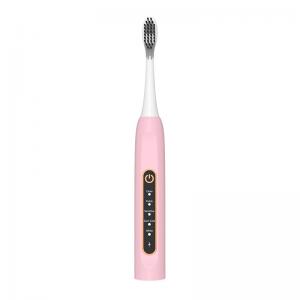

Add to Cart
To effectively clean the oral cavity, in addition to brushing teeth
in the morning and evening, it is also related to the way,
frequency, time, and brushing tools used.
A sonic toothbrush is more effective than a regular toothbrush in
removing plaque and tartar, as well as removing dead corners and
gaps in the oral cavity. The sonic toothbrush is a small patented
brush head that generates high-frequency vibration through the
frequency of sonic vibration. It shatters the dirt attached to the
surface of teeth, and with the continuous flushing of water sprayed
by the fluctuating cleaning force, it can effectively remove
pathogenic factors in the oral cavity and dentition, such as
tartar, dental plaque, smoke spots, and pigments; In order to
achieve the goal of preventing and treating periodontitis and
gingivitis, timely detecting and treating dental caries, and
preventing bad breath and odor.
What is a sound wave? Sound waves are mechanical longitudinal waves
that propagate in elastic media, with frequencies ranging from 20
to 20000 Hz and can be heard by the human ear
The working principle of a sonic toothbrush is to rely on the
high-speed motion of a micro motor to drive the toothbrush head to
swing left and right at high speed, generating mechanical
vibration, which is the generation of sound waves
The suitable vibration frequency for acoustic toothbrushes is
between 166-666Hz (10000-370000 times/minute), and different
frequencies of acoustic toothbrushes achieve varying degrees of
tooth cleaning effects. The cleaning effect of acoustic
toothbrushes is proportional to the frequency and amplitude of
sound waves
Ultrasound is a type of sound wave with a frequency higher than
20000Hz, which has good directionality and strong penetration
ability, but cannot be heard by the human ear. The high-frequency
vibration of sound waves can cause the water in the mouth to form
countless invisible, extremely small bubbles and cause them to
burst, which generates enormous energy. Tooth tartar, dental
plaque, dental calculus, and other substances can be destroyed by
the energy generated by the cavitation effect and separated from
the teeth, thereby achieving a dental cleaning effect. Because
these small bubbles can penetrate into all subtle corners of the
oral cavity, the cleaning range of ultrasonic tooth cleaning can
cover various parts of the periodontal area.
